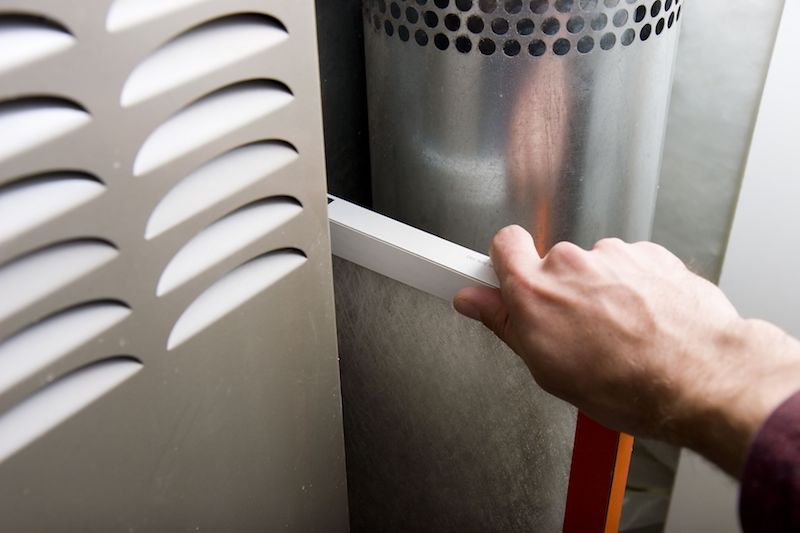
If you’re uncertain whether your Marshalltown house has poor indoor air quality (IAQ), it probably does.
We are indoors a lot. As a matter of fact, we’re indoors up to 90% of the time, according to the U.S. Environmental Protection Agency. And the air inside houses could be 2–5 times worse than outdoors, which can create long-term health concerns.
Most Common Causes of Poor IAQ
We’ve put together a list of the most common origins of bad IAQ, the problems they cause and how you can fix these indoor air pollutants. If you’re worried about the air inside your house, we suggest consulting with a expert like B & G HVAC about which products are ideal for your house.
Volatile Organic Compounds
Volatile organic compounds, or VOCs, are vapors emitted from regular household items.
They’re found in paint and stains along with:
- Furniture
- Carpet
- Building materials
- Cleaning products
- Cosmetics
- Air fresheners
- Candles
When these chemicals accumulate in your home, they can irritate your eyes, nose and throat. They may also result in headaches and nausea. Regardless of whether your house is in a rural or industrial area, an EPA study found indoor levels of these fumes can be 2–5 times greater than the air outside.
Always use the manufacturer’s instructions when painting or cleaning. Cracking a window can help odors disperse faster.
Air purification systems can also improve your air. This equipment partners with your heating and cooling equipment to enhance indoor air. When looking for a model, ensure it’s specifically made to eradicate VOCs.
Dust and Pet Dander
Dust and pet dander can aggravate health problems like asthma and allergies, especially when it continually gets moved by your house’s comfort system. While you can vacuum more routinely and get an improved air filter, an air filtration system might be a better match.
This equipment hooks to your comfort equipment to provide strong filtration. Some models offer hospital-level filtration for eliminating particles and bioaerosols.
Persistent Odors
Newer houses are tightly sealed to increase energy efficiency. While this is good for your energy costs, it’s not ideal for your IAQ.
Musty odors can stick around for a greater amount of time because your house is pulling in a smaller amount of fresh air. Since keeping your windows open all year-round isn’t an option, here are two methods you can make your indoor air smell better.
An air purification system is put in your HVAC system to wipe out odors before they recirculate. Search for one with a carbon filter and the ability to break down dangerous VOCs. These systems can also help keep your family healthy by getting rid of most bacteria and ordinary allergy triggers like pollen and mold spores.
A ventilation system pulls out stuffy indoor air and replaces it with clean outdoor air. There are two types of equipment (heat recovery and energy recovery), so call our professionals for more info on which type is best for your residence.
Unbalanced Humidity
It’s essential your residence’s humidity keeps even. Air that’s too humid can create mold, while dry air can cause respiratory concerns.
Our professionals suggest 40–50% for top comfort. To keep yours steady, think over getting a whole-home humidifier or whole-home dehumidifier with your HVAC unit.
In place of having to lug a humidifier from room to room, this product delivers even humidity around your house.
Carbon Monoxide
Carbon monoxide is colorless gas you can’t smell. It occurs when there’s insufficient combustion in fuel-burning units, like gas heating systems, water heaters or fireplaces.
It creates an extreme health risk. In small levels, it can cause flu-like sickness like headaches and nausea. It can be deadly in large amounts.
We recommend regular furnace maintenance to double-check your unit is operating smoothly. This job allows our specialists to discover issues before they start, including malfunctions that can cause carbon monoxide leaks.
The best way to keep your home free of carbon monoxide is to install detectors. These alarms should be on all floors near bedrooms and living areas.
Improve Your Home’s Air Quality with the B & G HVAC Professionals
Informed that your house has inferior air quality but not sure how to improve it? Or unsure which product is best for you? Give our friendly HVAC pros a call at 641-316-3360 or contact us online today. With free estimates and pro assistance, we’ll help you choose the best equipment for your family and budget.


